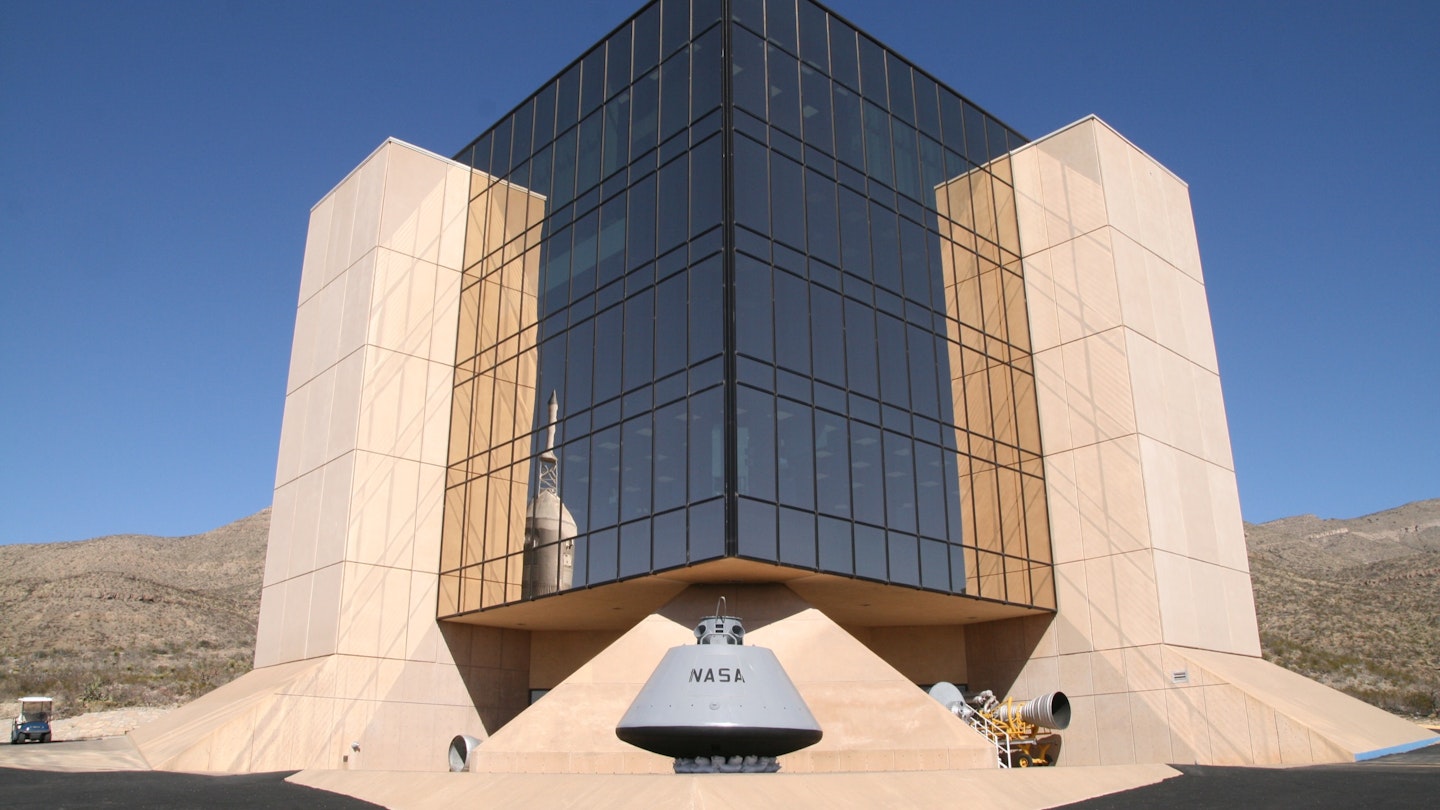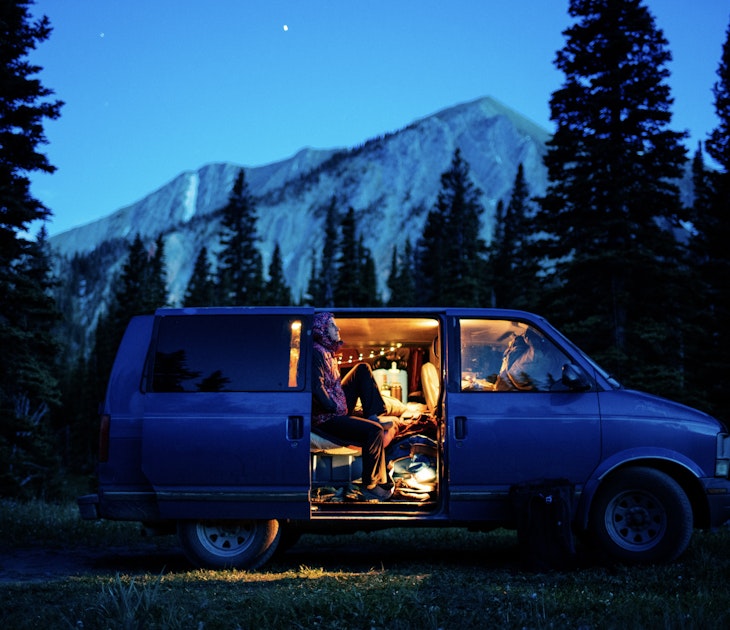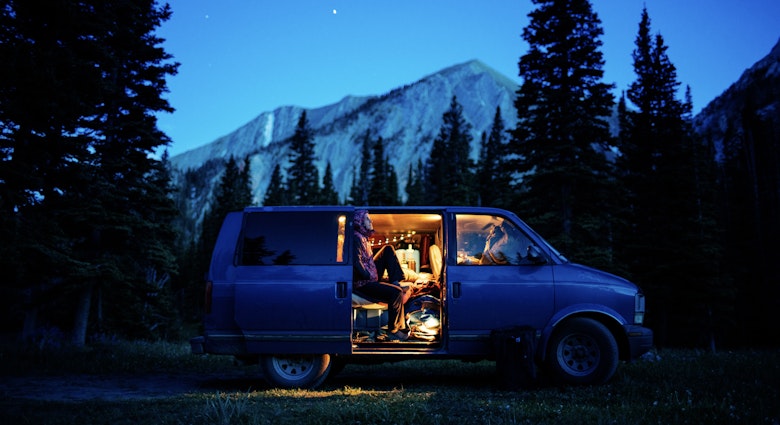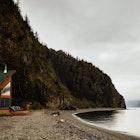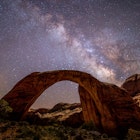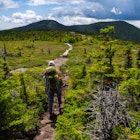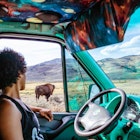In 2020, after years of planning and development, Virgin Galactic is set to send the first commercial flights carrying paying passengers into space, marking the dawn of space tourism. It all kicks off from Spaceport America in the desert of central New Mexico.

Even if you don’t have the $250,000 to buy a ticket out of the atmosphere, there are many space tourism sights in New Mexico, and the state’s long history of nuclear development and rocket launches, not to mention its astoundingly dark skies, make it a brilliant place to contemplate other worlds.
Whether touring the Spaceport where future tourist-astronauts will zoom into orbit, stargazing from a crystal-clear mountaintop, or UFO-spotting in the country’s most famous alien town, here is the ultimate guide to New Mexico space tourism.
Spaceport America
The epicenter of New Mexico's space tourism industry is at Spaceport America near Truth or Consequences. The first space tourists in the world (or the universe?) will be rocketed out of Earth’s atmosphere from the 2.27-mile tarmac ‘spaceway’ here. A number of private spaceflight companies lease the rights to operate at the Spaceport, but the most successful – Virgin Galactic – expects to send tourist-astronauts into space in 2020, starting with the company’s founder, Sir Richard Branson.

Unless you have the funds to sign up for a flight yourself (or know someone who does), the only way to visit Spaceport America is on a guided tour, which takes you through the hangar, mission control and onto the massive runway. You can also take a turn in a G-force simulator, giving you an idea of what it would feel like to travel at mach speeds.
Space Murals Museum
Slightly dusty but underrated, the Space Murals Museum near Las Cruces is more than a little surprising. Yes, a series of murals tracing the history of the US space program adorns a giant water tank at the front. But there’s also a replica of the Challenger Shuttle and a V-2 rocket, and the exhibition inside is a treasure trove of replica Mercury capsules, engines and equipment surrounded by walls covered in newspaper clippings, postcards, photos and donated artifacts.
Sunspot Solar Observatory
Managed by the Astronomy Department of New Mexico State University, Sunspot Solar Observatory is one of the largest observatories dedicated to looking at the sun and often hosts researchers from the National Solar Observatory. A self-guided walking trail takes you around the grounds, located on a mountaintop in Lincoln National Forest. The Dunn Solar Telescope is open to visitors when it’s in use (usually weekday mornings).

New Mexico Museum of Space History
The comprehensive New Mexico Museum of Space History in Alamogordo chronicles the American space program and the state’s involvement in space exploration, and also houses the only space hall of fame, which honors astro-greats like Neil Armstrong and Kathryn Sullivan. Outside is a collection of rockets, including the Apollo Launch Escape System test rocket, Little Joe II – the biggest rocket ever launched from New Mexico.
Very Large Array
In a remote area west of Socorro is the Very Large Array (VLA), a radio-astronomy observatory mapping outer space through radio waves. Part of the National Radio Astronomy Observatory, the VLA is a massive field of 28 telescope dishes (one is spare) that constantly monitor waves from the far reaches of the universe, including pulsars, gamma rays and supernovae, the last offering insights about how stars are born.
The VLA also played a key role in the 1997 film Contact, as the place where Jodie Foster’s character first identified an alien radio signal. A visitor centre explains the ins and outs of radio astronomy and visitors can walk around the field to get up close to the dishes.
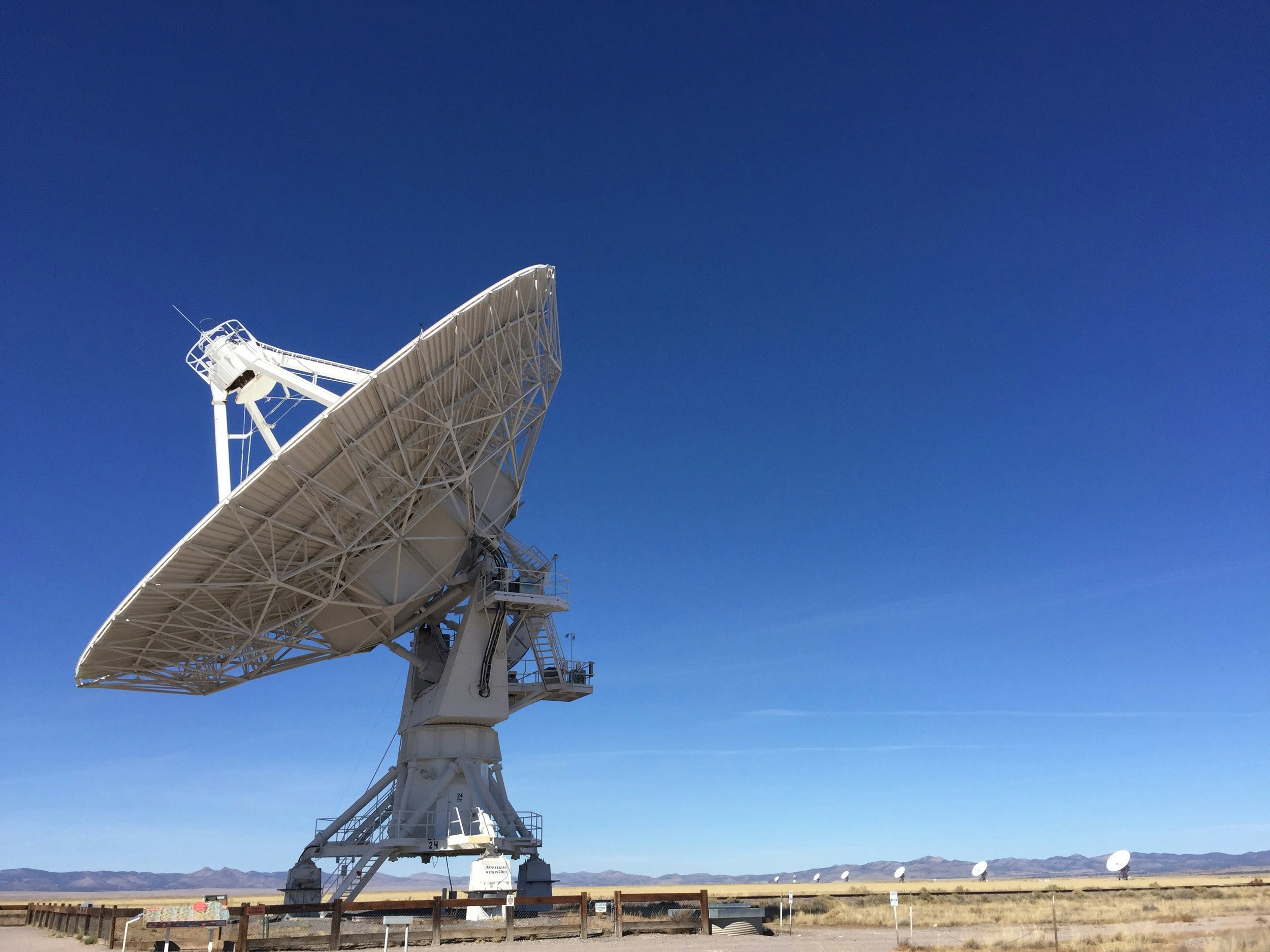
The National Museum of Nuclear Science & History
For better or worse, space exploration is inextricably bound up with humankind’s atomic development. The world owes much to New Mexico for its advances in rocket engineering and nuclear science – New Mexico was the setting of the 1940s Manhattan Project and development of the atomic bomb, and national laboratories here still carry out groundbreaking science that aids in space exploration and future space settlement.
The National Museum of Nuclear Science & History in Albuquerque is a good place to get to grips with this vast topic and the connections between nuclear science and space exploration. Its outdoor Heritage Park exhibit is especially interesting: there are missiles, historical planes, army trucks and a Redstone rocket.
Roswell
If Spaceport America is the spot where humans will launch as space tourists, then Roswell is arguably the first earthly tourist destination visited by aliens. This eastern New Mexico city was made famous (or infamous) in 1947 when an alleged UFO crashed in the desert outside of town and alien bodies purportedly recovered from the craft. Today the name ‘Roswell’ is synonymous with paranormal activity and it plays up its UFO connections with the International UFO Museum & Research Center, a non-profit museum dedicated to UFO sightings and alien encounters (don’t miss the gift shop, where you can get your UFO driver’s license).
Elsewhere around town, Alien Zone is a gift shop full of UFO kitsch, and the Roswell Space Walk is a psychedelic art installation that leads you through trippy, blacklighted scenes of Zeta Reticulans engaged in a variety of semi-questionable activities. Come in July for the Roswell UFO Festival, which celebrates extra-earthly life with live music, alien costume and pet contests, a light parade and drinking.
Trinity Site
A large swathe of central New Mexico is given over to the White Sands Missile Range, a US Army testing area adjacent to Spaceport America and the newest US national park, White Sands National Park. The first atomic bomb was tested here in 1945, at a location known as the Trinity Site. Now a national landmark, the site includes the early atomic scientists’ base camp, bunkers and an obelisk marking the exact place where the bomb exploded. It’s only open two days a year, on the first Saturday of April and October.
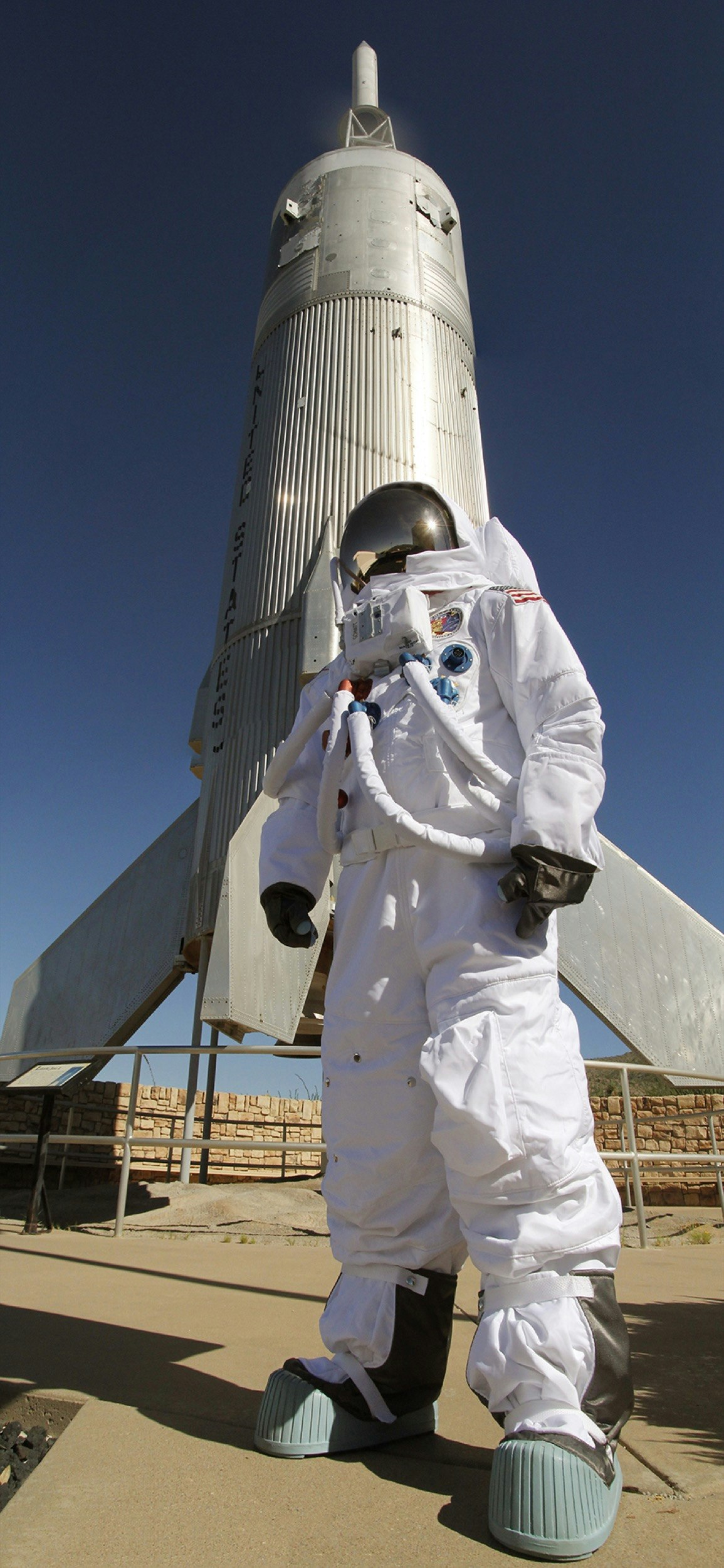
Los Alamos National Laboratory
Though not strictly speaking a space-related sight, Los Alamos National Laboratory’s Bradbury Science Museum chronicles atomic science and its development at the lab as part of the Manhattan Project. A gallery dedicated to the lab’s current and future research offers important insights into nuclear science in New Mexico and its connection to space exploration programs.
New Mexico astronomy tours & star parties
Space tourism isn’t all about rockets; indeed, the best part about New Mexico is the sky above it. Sparsely populated, the state suffers far less light pollution than most of North America, making it a wonderful place to see the Milky Way unfettered.
What is now New Mexico was also one of the first places where early humans created land-based connections to the stars. Ancestral Puebloan people built the structures at Chaco Canyon along celestial lines and it was designated as a Dark Sky Park by the International Dark-Sky Association in 2013. A number of New Mexico’s state and national parks, including Bandelier National Monument and White Sands, run regular star parties and nocturnal programs.
Tour companies like Astronomy Adventures and Night Sky Adventures offer evening tours of New Mexico’s night skies, guided by experts that help you understand what you’re looking at in the massive universe visible above.
Sleep under the stars in New Mexico
Stargazing and telescope astronomy are accessible at almost any campground or national park in New Mexico. The Cosmic Campground in the Gila Wilderness is a dark-sky site where light pollution is prohibited, and there are platforms for telescope setup. Or if you don’t want to sleep in a tent, check in to Casitas de Gila Guesthouse, where every room is equipped with a telescope and star chart, and co-owner Michael leads evening guided astronomy sessions.

